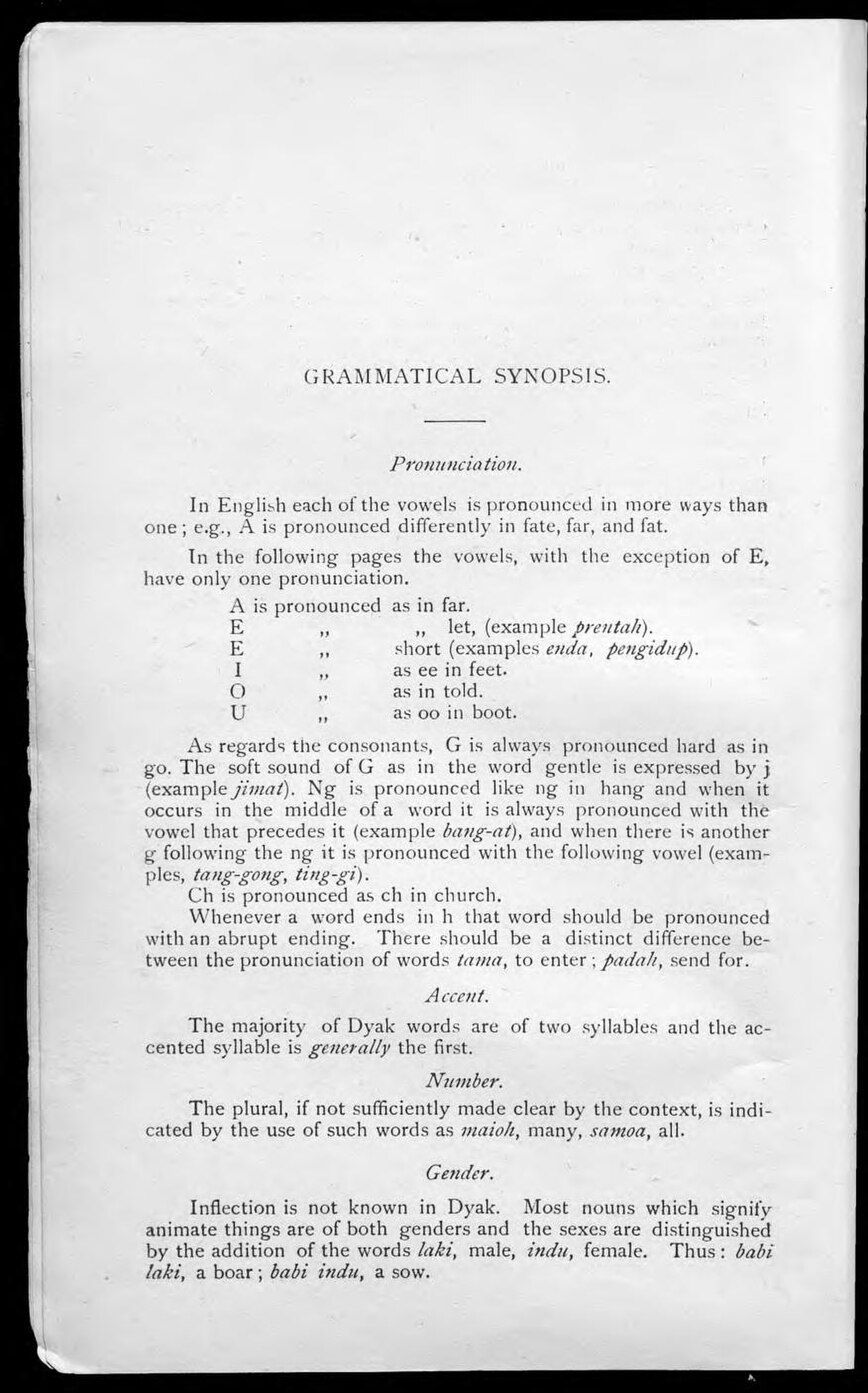GRAMMATICAL SYNOPSIS.
Pronunciation.
In English each of the vowels is pronounced in more ways than one; e.g., A is pronounced differently in fate, far, and fat.
In the following pages the vowels, with the exception of E, have only one pronunciation.
A is pronounced as in far.
E is pronounced„as in„ let, (example prentah).
E is pronounced„short (examples enda, pengidup).
I is pronounced„as ee in feet.
O is pronounced„as in told.
U is pronounced„as oo in boot.
As regards the consonants, G is always pronounced hard as in go. The soft sound of G as in the word gentle is expressed by j (example jimat). Ng is pronounced like ng in hang and when it occurs in the middle of a word it is always pronounced with the vowel that precedes it (example bang-at), and when there is another g following the ng it is pronounced with the following vowel (exampies, tang-gong, ting-gi).
Ch is pronounced as ch in church.
Whenever a word ends in h that word should be pronounced with an abrupt ending. There should be a distinct difference between the pronunciation of words tama, to enter; padah, send for.
Accent.
The majority of Dyak words are of two syllables and the accented syllable is generally the first.
Number.
The plural, if not sufficiently made clear by the context, is indicated by the use of such words as maioh, many, samoa, all.
Gender.
Inflection is not known in Dyak. Most nouns which signify animate things are of both genders and the sexes are distinguished by the addition of the words laki, male, indu, female. Thus: babi laki, a boar; babi indu, a sow.̼
